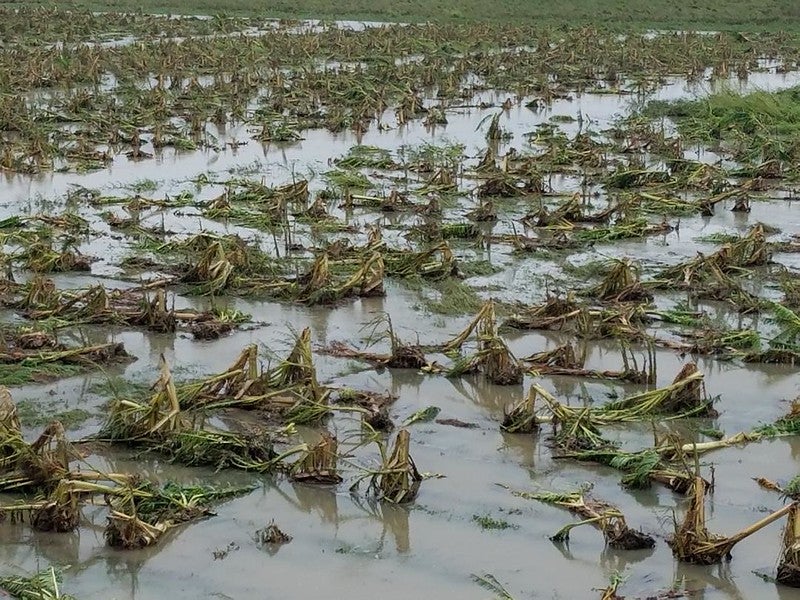3 steps for agricultural lenders to mitigate climate risk and finance resilience
Farmers in the U.S. are facing severe challenges including poor economic conditions, extreme weather and disruptions from the COVID-19 pandemic. These risks also impact farmers’ financial partners, including agricultural lenders.
While some of these risks are difficult to anticipate and plan for, there are growing opportunities and resources available for farmers and their lenders to better understand their vulnerabilities related to climate change — and take steps to build resilience.
A new report, Financing Resilient Agriculture: How Agricultural Lenders Can Reduce Climate Risk and Help Farmers Build Resilience, finds that lenders can reduce risk by supporting farmer investments in conservation practices like no-till and cover crops that are known to build climate resilience.
This report provides a path forward for lenders to support a more productive, profitable and resilient agricultural system.
First, lending institutions should assess their climate risk
Following severe flooding in the spring of 2019, bankers lending in the Midwest reported to the Federal Reserve Bank of Chicago that approximately 70% of their borrowers were at least moderately affected by extreme weather events in the first half of the year.
At the same time, the portion of the region’s agricultural loan portfolio reported as having “major” or “severe” repayment problems hit the highest level in 20 years.
While federally subsidized crop insurance remains an important shock absorber for farmers and their financial partners, it is not sufficient to protect farmers, lenders or the broader agricultural economy from climate risk. Crop insurance does not cover farmer losses fully, and the majority of coverage goes to just a few crops.

In the face of severe economic and environmental challenges to U.S. farm production, agricultural lending institutions have a critical role to play in assessing climate risk and taking steps to reduce those risks.
Second, lenders must understand how conservation practices improve resilience
Building climate resilience is a complex undertaking. This report focuses on a critical piece of puzzle: farm-level management strategies for soil health, water use and crop diversification that build resilience and provide other economic benefits for farmers and their financial partners over the long term.
A 2018 farm budget analysis demonstrated how conservation practices — specifically no-till, cover crops, extended crop rotations and nutrient management — can deliver measurable economic value in terms of cost savings and crop yield risk reduction, particularly when viewed over multiple years. Despite these benefits, the associated costs and risks during the transition can deter many farmers from investing in these practices, especially in economically challenging times.
Current loan offerings generally do not align with the financial attributes of conservation practices, creating challenges for farmers who use or are considering adopting these practices. A particular challenge is the short-term focus of annual farm operating loans, which do not incorporate the value of longer-term cost savings or risk reductions.
Lenders can help facilitate farmers’ transitions to conservation practices by familiarizing themselves with the financial impacts of practice adoption and learning about strategies to minimize costs and maximize benefits. Ultimately, supporting this transition will make farmers and their financial partners more resilient to climate change.New report provides a path forward for lenders to support a more productive, profitable and resilient agricultural system. Share on X
Third, lenders can realign decision-making and products to value climate resilience
Lenders cannot promote specific practices to their borrowers, but they can design lending programs and products that both support farmers in transitioning to conservation practices and incorporate data on the benefits of conservation practices into credit rating processes. This will allow the value of resilient agriculture to be accurately reflected in credit structures and pricing.
The report includes specific recommendations for better aligning current loan offerings with the financial attributes of conservation practices to remove barriers to farmer adoption and tailor loans to the financial dynamics of such practices. For example, lenders could offer multi-year loan terms and adjust repayment periods to smooth the transition.
Taking a multi-year view of profitability will help agricultural lenders and their farmer clients find value in conservation practices that support a more productive, profitable and resilient agricultural system.










